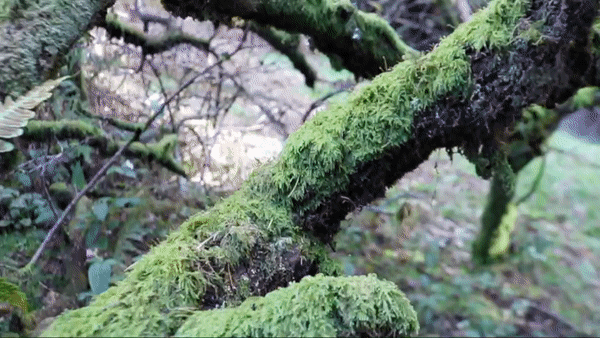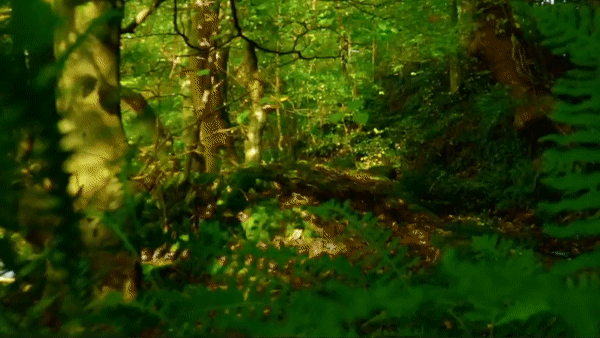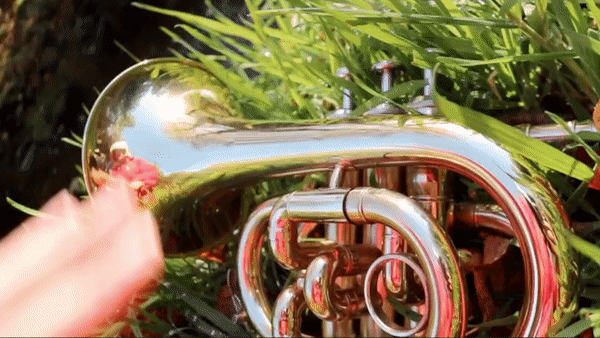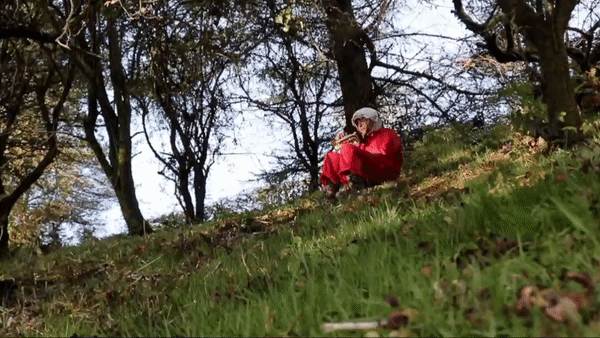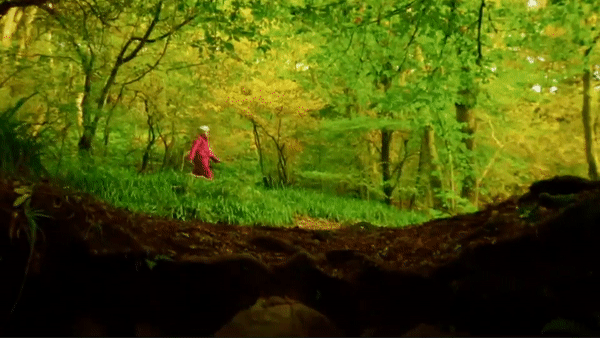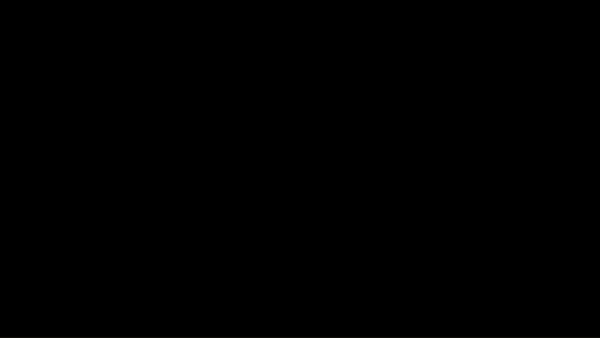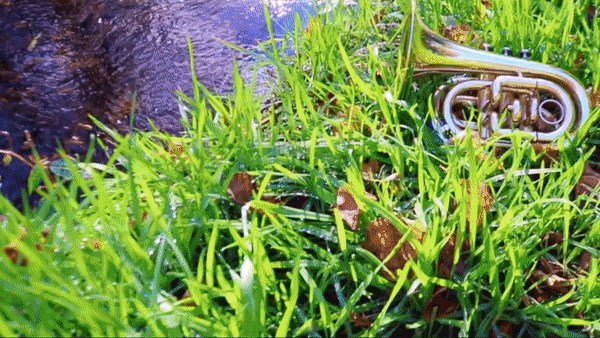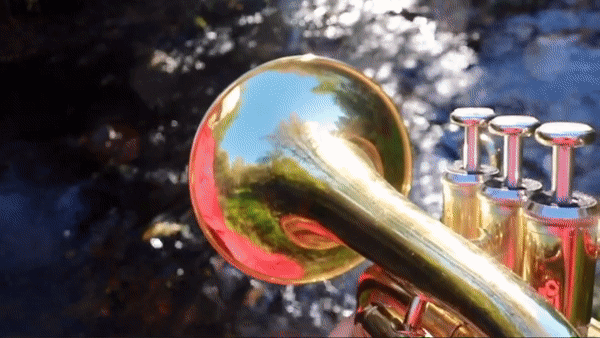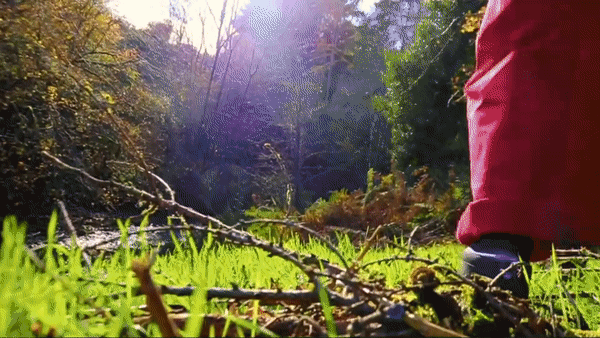


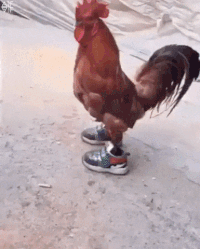
//Broody beginnings
//Broody beginnings


I wanted to expand on the possibility of combining a couple of aspects I have been Intrigued by and bellow is a diagram that gives some clarification of this relationship between the psychical 'space suit' and the natural response to be broody'


Though brief research into both of these topics, I want to create a narrative to combine these aspects. To take the viewer deep into a 'nesting' sensation though physical incubation techniques. Whilst playing with the turbulence of being a young individual and having the will to continue ones lineage and perhaps that not being the most liberating response in a young life.

The liminal, the ceremony and function
Liminalism initially formed as an anthropological theory, the classic structural functionalist view was, ‘first introduced as a concept in 1909 by the ethnologist Arnold van Gennep, in his fundamental work ‘Les Rites de Passage’ (1909)’
He talks of all rites of passages to fit to a common structure, a period of separation leading to liminality then of reintegration or incorporation. Figure 2 gives reference to this structure 2 To help give reference to what this structure relates to, let’s use the example of a wedding ceremony. In traditional western culture an unmarried couple (state 1) begin the ceremony by being separated from their future spouse, perhaps seen though the hen do or seen though not being in the others presence until walking down the aisle (separation). There commences an act of liminality, betwixt the initial state and the penultimate state of marriage. Integration happens through the completion of the ceremony (incorporation or reintegration)
Thoughts upon liminal have far outlived the simple act of ceremony. Alluring is its replicability and systematisation of ceremony that is perceived unconsciously in far more abstract terms. Perhaps some may find that the formative nature of such a systemisation cold and distant from the living experience of the ceremony.4
‘Turner argued that rites of passage are antithetical to existing social structure and “subjunctive” because they invite new possibilities. Rites enable participants to experiment with alternative social relations or to invent new ones.’5
However if one applies other off branches of liminality into liminal thinking, then we take ourselves on a liminal journey to become conscious of the ground of our belief .
David Gray gives us a structure for reappearing from unconscious thought to deconstruct the abstract reasons of thought.
What Gray does here is crucial to our comprehension of how thoughts on liminality can be applicable to subsequent restructuring of the thought. This is unlike Van Genneps’ liminal Rites of Passage that is a retroactively applied theory. The relationship here between the two theories is not superficial in its use of liminal terms but follows the conception of how it utilises ceremony, being conscious of the mental state. You are unconscious of the obvious, built upon beliefs, formed through judgments, from theories, occurring from experiences that we pay attention to. (figure 3). There is an evident benefit here in theorising how we structure our thoughts to come to new conclusions. It allows us to be conscious of our decisions and allows others to follow the same line of enquiry using our own methods. It is the consideration of the human condition. The utility of function placed into comparison with liminal thinking is to see function in the place of the liminal period. will the distinction between the two set values of the human and machine be possible and if so will the model of function in relation to the input and output possible within this context. If so will function remain betwixt ed in the liminal realm of relational theory? Will a theory of function as relatable terms to art practice give a model that can be utilised to think of our physical response in action to creating?
One theory is defined by natural laws that result in the production of the physical object. The other contemplates the barriers of the abstract laws governed by our interpretation of experience. What exhilarating potential lives in utilising these aspects in unity and systemising the theory of function for art practice. Essentially as artists we aim to find the liminal space between our reality, what we experience and the practical embodiment of the art object, in order to birth an original thought. Functionised theory as I see it formulating thus far isn’t the consideration of aesthetic theory, it isn’t even conscious of the ultimate art object, yet it is the how, and the happening of how.



//Spacesuit silliness








Because our incubation efforts don’t just effect us but another. All of these feelings are exaggerated in space. The danger is endless and all consuming. It calls for us to do the same with our own protection methods.
The history of the space suit itself is really intriguing as one might expect it began long before the idea of space travel was seen as something possible. From the cast iron diving suits with grated windows for the face to the concepts of robotic metal like containers of people, the image of an overengineered piece of clothing has been in our minds for a long time.
There is something ‘ultimate’ about the over engineered piece of clothing. If we wear clothes to protect ourselves, the beacon of protection must be the space suit.
Transferring of physical state of thought – transition between the skepticism of 'space' as both a psychical otherness homeostasis and a spectrum of perception.
There's something really alluring about a spacesuit. Perhaps it's because most of our ‘Happy places’ are those that encase us in a form of protection, a particular spot in your home or a chair that you fall asleep instantly in. For me its any type of blanket. Anywhere that we feel safe is often where we can be self contained for a long period of time. The external world drifts into the background and we feel secluded. We are incubated with our own thoughts. This feeling of incubation is perhaps escalated through periods of time when we feel broody.



Additions to the body
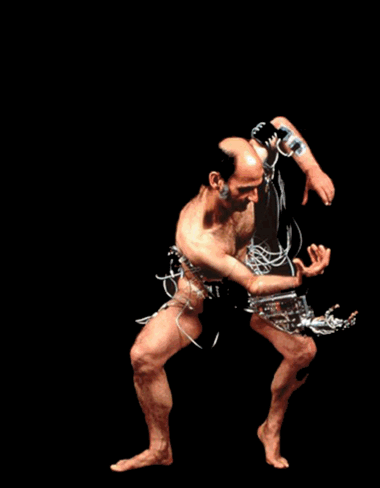

Charles Fréger's Wilder Mann//









I could justify my choice of using soft materials to form the space suit as informed and considered. However I would be lying, simply it was because it was an easy way to bang out some rough shapes to form a space suit.
I started with the helmet. Using my bike helmet as a guide I eventually found the best material for this was a soft thick form of pulley rope. Twisting the rope around each other I formed the shape with hot glue. This rope works best with the hot glue as, unlike some material, it has a lower plastic count and so the glue has more potential to ‘grip’. I enjoyed this method as it becomes easy to rip it up and start again, without damaging the rope.
I repeated this process for a cuff, forming the shape around a plant pot I had lying around with bumped edges. How could I stop there, to go with my hat and sleeves of course one needs some gloves to adorn ones hands! This took a couple of goes using a simple pattern, a felt material made it simple to sew on a sewing machine. I enjoyed the texture of this, it accented the off white of the pulley cord nicely.
Slowly a uniform started to develop, with the blue neck cuff I felt as though I had a good beginning to build upon. However I felt as though I couldn’t yet complete my suit without having properly explored the environment that I would be in. I wanted to find out what this new space world was going to look like, what creatures I would encounter! So I put the brakes on my uniform, wearing it intermittently as I made other things to get into the space-person mind set.


Making of the space uniform







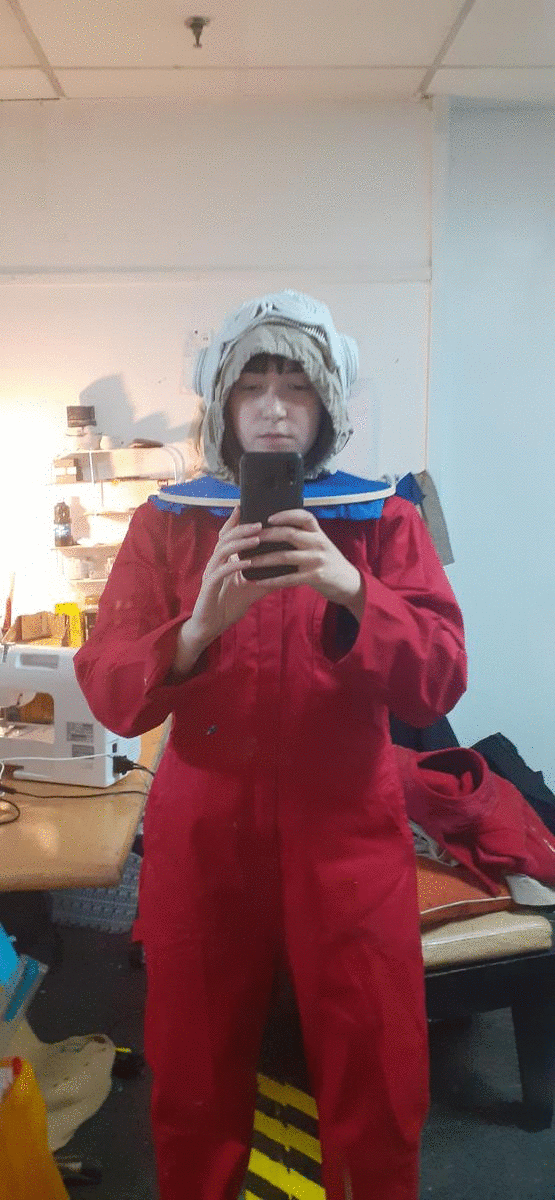






Naum Gabo // Future's textures, revolution and working Futurism

A revolution through the aesthetic a new form of futurism had been brewing in Russia, in the grips of revolution even the most alternative of notions were being rethought and rejigged. Naum Gabo was one of these revolutionists and in the form of a new manifesto called ‘The Realist Manifesto’ ‘he and his brother Antoine Pevsner announced a new form of art based on space and time’[1] Having moved away from figurative works, he set his sight towards sculptural abstraction. It's hard not to see the influence of the artists Naum Gabo’s past education in Engineering, supposedly combined with philosophy in the early 1910s (a most sensible combination of study) [3] His works are more like ‘feats’ of not only what is possible in the combination of material and psychics but in the relational aspects of the material.
‘All is a fiction . . . only life and its laws are authentic and in life, only the action is beautiful and wise and strong and right, for life does not know beauty as an aesthetic measure . . . efficacious existence is the highest beauty.’[7]
In particular his work ‘Construction in Space (Crystal)’ perpetuates this aesthetic of the ‘dynamic’ but does so in a sterile nature. The twists and manipulation of a translucent skin are as though it's suggesting the adaptability of the human. This amalgamates in a tension between the aspects of the material used that stay rigid and that which can be manipulated. Perpetuating the themes of the ever-relevant ‘dynamism’. The colouring of the plastic may be due to age; it gives off the sense that this material has an organic nature to it.
‘Construction in Space (Crystal) was the first work made entirely from transparent planes, an elegant formal solution to the challenge which Gabo had set himself twenty years earlier, that of expressing the dynamic interior of objects.’[4]
It does seem as though the work perpetuates a sensation of exposure. I’m tempted to ask when looking at this work, What does this remind me of? Am I looking at something that I have known? If it echoes something familiar then perhaps this marks the success of the goals laid out in ‘The Realistic Manifesto’. Its important to understand what is really meant by futurism and why so many found its failings to excel new reworkings of its writings.
‘The attempts of the Cubists and the futurists to lift the visual arts from the bogs of the past have led only to new delusions. Neither Futurism nor Cubism has brought us what our time has expected of them.’[2]
How could human nature resist the influence of technologies ability to make us suggestive of a new future. Preconceived notions of the future dissipated when the influence of the machine slipped into our grip. In the early 1900’s Fillipo Marinetti birthed the futurist ideals into the hands of artists, writers and anyone one who was weary of relieving the past. He wanted us to live in the present and accept the momentum of the evolving industries, to fully appreciate the futures inevitability and set our eyes on the new idols of the modern age; the machine.
“We declare that the splendor of the world has been enriched by a new beauty: the beauty of speed. A racing automobile with its bonnet adorned with great tubes like serpents with explosive breath...a roaring motor car which seems to run on machine-gun fire, is more beautiful than the Victory of Samothrace.” [5]




This supposed ability for the world to find enrichment went unnoticed. The cogs went on moving and the predicted inevitability of the machines force perpetuated.
The Italian Futurists became the marmite of their generation. Some found their revolutionary ideas to be thrilling and others found them to be offensive to tradition.
‘He was cognizant of the evolving national consciousness, long buried beneath the vigorous, if pretty, rivalries of the city-states.’[6]
Dispute the opposition some found the idea of revolution too enticing to let go. Superpowers adopted Futurism and reworked it without the contradiction of its poetry. Russian Futurism was fundamental in interpreting this influence on ‘The Realism Manifesto’. What could be gained from the stark switch to abstraction by Naum Gabo? His plight was one of realistic representation, governance could be portrayed through the functions of psychics limitations.
‘No new artistic system will withstand the pressure of a growing new culture until the very foundation of Art will be erected on the real laws of life.’[8]
What's more neutral than that which is fundamental? And where is a better place to begin rethinking the art world than from a place of ultimate neutrality? Nothing brings me more joy than thinking of a utopia as simplistic as this realism would suggest! The reality of our society funnily enough gets lost in anything that calls itself realism. As it becomes evident that we can’t reduce the world to such a narrow perspective of truths.
I guess this is where we are different in the perspectives of the future to that of the original futurists. They saw the machine as a marvel, and an encroaching, some level of mystery and wonderment. Were as we may find it challenging to distinguish where the machines are and aren't in our environment, the encroachment has already arrived and set up camp.
In my dissertation I have been writing about function and what we can gain from understanding the logic behind function’s definitions, both linguistically and mathematically. The function of Naum Gabo’s work is intriguing in accordance to my research. Its aesthetic is

one that accentuates the tensions of fundamental law and with this suggests its function is motivated, that these works of art are motivated and hold kinetic prevalence. ‘A construction in Space: Diagonal’ displays forms of perfectly smooth and accurate shapes, constructed within an exo-sketeliton frame. The materials are again transparent and seem to be interacting with each other. This philosophy seems to accentuate the expose of the object. What are we then exposed to? How it functions, how to replicate it, its essence? All this powerful in message and athletic relation but ultimately functionless in its relation to what it actually does. It echoes that of the ‘functionless’ spinning models of the artist Bruno Munari. Ultimately his works of that converse in this functional exposure, performing futile tasks, form a utopian air to the works. It feels like the future as just how we look at the past with a similar taste of mystery, we look to the future with anticipation of its meaning an purpose.
[1] https://www.tate.org.uk/art/artworks/gabo-construction-in-space-diagonal-t06973
[2,7,8] http://theoria.art-zoo.com/the-realistic-manifesto-gabo-pevner/
[3] http://www.yellow-cake.co.uk/naum-gabo-sculpture.html
[4] https://www.tate.org.uk/art/artworks/gabo-construction-in-space-crystal-t06978
[5] ‘Futurist Manifesto’ First Published in Poesia (magazine) 1909
[6] Futurism, Politics painting and Performance Christina J.Taylor





At the heart of futurism as I see it, the goal was more for the morality of the individual. Birthed from individuals who wanted a voice and for that voice to be heard. The call of their voice wasn’t coming from an overtly political origin. But one that wanted momentum whilst holding onto decorum and yet how are we to obtain such delights universally? Through an antiquated perspective of war and violence.
It dismissed tradition and yet formed new idols and new ceremonies to influence people that they were stuck in the past. Perhaps we can see it as fitting that we don’t eat futurist food now, as its founders would see ourselves in the modern age to be stagnant in our progression.
In this sense we are to turn our heads away from the influence of anything outdated. Something popularist leaders would also hail.
All of this influence and desire and propulsion from the idea of also worshiping the machine. I am so overwhelmed by the relevance of futurism today and its worrying effectiveness that I think it to be essential in the interpretation of the modern perspective on the future.
Thinking out loud: Retro-activley contemplating futurism and my concerns and obsessions.
Futurism has been dismissed in the past as something ill important, not seen as the keystone of the turn of art’s definition. Its influence from cinema and cuisine can be traced back and represented with great efficiency today however. Futurism lives on in its ideals in our modern age. It predicted that we would embrace and praise our frame of the world through the mechanical eye. What's radically different however is the contradictions of the placement of power. Industry and politics were projected to be joint at the hip, in reality it seems the idealized machine holds its own baton against the leaders of the world. And industry giants of today influence our freedoms and buy into them. We were not required to dismiss our pasts and burn down our libraries, instead industry monetised the desires of the past. We have stayed sentimental and grown greedy. What then would be projected for the individual?
We think of our freedom to be quantified and gained though what we can obtain. In a sense if we are to obtain our new understanding of freedoms then we are to give into the machines freedoms, just as the futurist predicted.




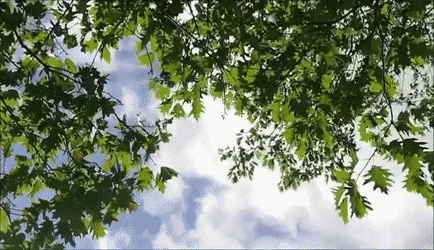



An excerpt from a recording of the artist Vija Celmins, talking of how she came to make the work above.
I had gone to New Mexico, where I often went and walked around picking up stuff, and I picked up a series of stones that were quite beautiful, most of them from around the Rio Grande near Taos, where the river had thrown them up over many, many probably centuries.
So I brought them back, and I was seeing how fantastic they were and how much detail they had, and I had this desire to make them over. So I thought, well, maybe I'll put them in an art context. I'll make them in bronze, and then, I'm going to paint them. And usually I talk about it as re-describing them, which is a term that really tells you what is going on. It's like a record of concentrated looking or maybe a record of a long relationship that I had with this piece of nature that was found. Each part of the surface has been observed and noted with a brush.
I decided as I was working on it that I would leave the found piece with the re-described piece, so that a viewer can have a sense of discovery and hopefully a little sense of delight when you see that one is found and quite natural, and another one has been seen, and made. Over the long run, it made me feel kind of happy. It woke me up to painting and to using color, which I had not been doing.
The work does have a sort of hiding of skill and craft, a kind of a closed off quality. Sometimes I thought of it like a work that's over-imagined on my part, (Laughs) because it's so thorough. I was going to put the rocks back in the desert. But then the piece went on so long that idea (Laughs) faded. So I did the next thing: I arrange the work every time differently. It's basically a piece about looking and making and a meditation on that.
Whilst considering what I do with the collection of objects I have created, it's intriguing to hear of the somewhat indecisive nature of how Vija Celmins talks of when thinking of her work. There is a certain truthfulness she wants to uphold, a sincerity to the object that she has created. The contemplation of whether to place the casted stones back into the desert is one that I found particularly enlightening to her philosophy. Suddenly I see the work in a new light, one that focuses on the sacredness of the object and protecting this sacredness to upload the wonderfulness that originally inspired the work. It is helpful when considering the playful nature that this type of theorising of the ‘object’, that theory can assist in a chronological story-line.
How she talks of her work reminds me of the themes of possession within Jimme Durham’s poem ‘Object’ from 1964
It must have been an odd object to begin with.
Now the ghosts of its uses
Whisper around my head, tickle the ips
Of my fingers. Weeds
Reclaim with quick silence the beams, pillars,
Doorways. Places change and a small object
Stands defiant in its placeslessness.
Durable because it contains intensely meanings
Which it can no longer pour out.
Jimme Durham, ‘Object’ (1964), in Jimme Durham, A Certain Lack of Coherence (London: Kala Press, 1993) 58.

Re-describing objects / Vija Celmins. To Fix the Image in Memory. 1977-82

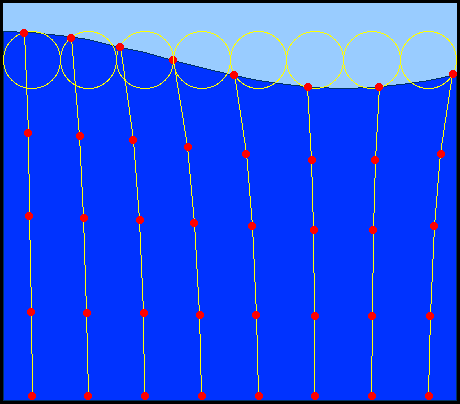
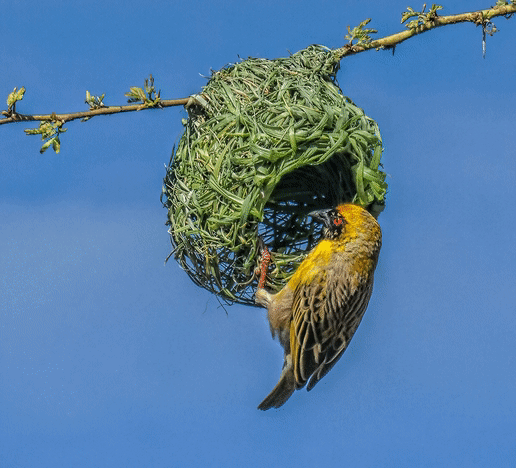


Making of the canal boat
After exploring this innate sensibility to nest, I wanted to cement this into the psychical.
The most immediate of thought was a home, that would used as a vehicle of comfort and security for the younger years of existence.
There is no better place than the canal for this, in essence a tranquility exists in the environment made though the eyes of the industrial age. Now it exists over grown, snaking its existence though the heart lands of uk and utilised for pleasure living. Lives are surrounded by water that its self is contained and controlled. There is a consistency of the level of the water that gives a unique piece of mind to those who choice to live off land. I see it as a symbol of tranquility and controlled escape that I urge to explore later in my research.
I remember learning the lathe in the wood workshop. An accident occurred where a piece of the wood I was turning spun off and hit me in the face. Joe the technician who was teaching me how to use the machine immediately shaw the shock on my face and insisted that I was to use the machine straight away after having a blip. He explained later that we shouldn’t become spooked by accidents and the only way to overt our selfs from that reaction is to pick up the tool immediately. This sort of aversion therapy has become a large part of my ontology for making. I think we all get spooked from time to time by becoming psychically engaged with the material in-front of us, the medicine for this is just to keep going, to pick up the tool and continue.




With this in mind I wanted to start creating straight from the get go. I knew that research would place my minds goal further from creating and so set out to make a model of the canal boat.
Some quick preliminary sketches turned into a design I drew out on a version of Sketch-up. With crafting the model from starch time consuming and out of my skill set with the tools I had, I planned to obtain sections of the boat though a laser cutting service.
Considering the practical design of the boat (see image of 2d plan) I followed the cheapest and lightest material on offer and played within the dimensions the thickness of the material would provide me when making a standing model that slots together.
I find the vector softwares inadequate for making a model with such specific dimensions and so used plug in extension called ‘Flight of imagination’ that allows you to convert 2dimensional drawings from the free version of sketch into SVG’s that is a compatible format for CAD. For anyone who is interested in using this form of design, the 2014 version of sketch-up (still available to download) allows this plug in to work. It might save you the hefty price of more specific softwares.
Using FLUX’s services I obtained the panels for the canal boat at a very reasonable price and set about staining the wood with an antique wood stain and then assembling the parts with a resin based wood glue. Important if you are wanting water resistance. I spent a long time sanding down the edges of the model to get rid of the burn from the laser printer and trying to obtain an aged look though lightly picking at the wood with a nail. I gaps in the model i filled with a dark wood filler and then stained to obtain a little more consistency. The hull has a mixture of the wooded panel and some scrap 1 ply wood I found for the rounded corners. Then filled in this ridge that was created with wood filler. I went though several stages of Sanding painting and filling before I could get it to look seamless. I’m using a super yacht polythene to ensure a very water tight resistance. It will take about 3- 4 coats of this to ensure it won’t ruin.
Its during this making that I see the model being filmed in an alien environment. Open to the elements, out of the slim security of the canal water ways. I have found my self dreaming of how bazar this could look. I now chuckle to think I own a canal boat.





//Nesting Newness
''...Deciding that a submarine would be the best means of delivering his mines in warfare, he built an eight-foot-long wooden submersible that was christened the Turtle for its shape. Large enough to accommodate one operator, the submarine was entirely hand-powered. Lead ballast kept the craft balanced.''




She Floats!
Tools are the vessel for the gesture and there has been a no better example of how through the tool can extend the performability of the artist than ‘Semiotics of the Kitchen’, “as she speaks, she names her own oppression”. In this sense tools, like works of art, hold there own weight, there own meaning, there own potential for performability. Perhaps it's just because I enjoy tools in their symbolism and particularly using them, but the integration of how its made into the final work is the most compelling aspect I think I could imagine about an artwork. Tom Sachs ontology accentuates this gesture of the creator through the replication of engineering marvels in the mode of models. He hails the haptic through the DIY aesthetic of replication through accessible material. ‘Lav 2’ is a scale 19 replication of an aeroplane toilet. Functional in its designed purpose in all aspects it is a replication, a spot the difference between the sculpture and a ready-made installation would require a
magnifying glass. Consequentially what holds prevalent here gestural decision to create in such detail.
‘For Descartes, both the world and the self are transparently knowable, and the world is to be
remade in the image of our knowledge of it: the most typical feature of modernism in every field.’ 20
Function has interpretive prevalence here in both the functioning capabilities of sculptural pieces and giving the autonomy of function as its thematic element of which to be perceived. The tool does not exist in the aesthetic function presented to the observer and yet it prevails in our minds as we ponder the replicable nature of the object. The everyday materials that are accessible, the visible accents of the objects construction and the schematic drawings that detail the process accumulate for us to think that we could partake in this replica also. The DIY aesthetic is more than just a fad but something that makes not only works of art accessible enjoyable and pleasing but demystifies the creator of the work to someone who also uses objects and materials that we do. But the ultimate comfort for me in all of this is the hailing of the tools as the ultimately expressive aspect and the role that they play.
Haptic deconstruction of the machine - Tomas thwaites
The deconstruction of the machine itself and what its physicality entails both though the ultimate purpose of a machine's function and the construction of the said machine. Ultimately this is what Tomas Twaites set out to achieve through his work 'Toaster'. To construct an object complex in its elements and highlighted in its complexities when placed comparatively to what is achievable by an individual constructing it in its raw elements. Twaites achievement of the toaster tells us important elements of our dissolution to our connection to these machines. Firstly we could deconstruct our own relationship with the function itself, we may say I made toast however as we cannot fully interpret the full complexity of the toaster itself we did not function solely in our task as we may like to think.
‘The contrast in scale between consumer products we use in the home and the industry that produces them is I think absurd – massive industrial activity devoted to making objects which enable us, the consumer, to toast bread more efficiently. These items betray no trace of their provenance.’23
The complexities of this kind of utility are crucial to our interpretation of function. Emphasis is then placed juxtaposed to expected human exceptionalism of the task. In turn, this explains my own striving to make a functional machine from the raw elements I use, conclusively to set out for a failure of their function. Throughout my practice, I am driven to create a functional machine. I've attempted to make whistles, shoes, bellows and musical instruments all with their purpose to be as one would expect. Every one of those goals has ultimately led to a failure of the desired function from how they should function.


Pondering the role of the Tool
Pondering the role of the Tool
Our haptic relationship with the tool in art making can be understood through a process in action, through the mistakes and triumphs of creation. What comes from this is a worked on object, carrying the gestures and nuances of the person and the tools that formed it. However what occurs when that object is left unoccupied by the maker or craftsperson, when it is exposed from the workshop without the very things that made it?
Do we need to see the object contextualised though the action of making? Does the Aesthetic Function of what is in front of us translate consistently if not everyone is aware of said process. For process lead work the function of the piece may not have the observer in mind at all and yet often these complex works are showcased in clean environments as though there is nothing else that we need know to investigate an art piece. It would seem to diminish the objective of modern art pieces for things to be simplistically explained to us. For us to be given a set of instructions or a list of attributes that we should conclude after viewing a piece. What then happens when Martha Rosler acts the role of the kitchen's Hostess and introduces us to her utensils? Rosler tells us what the function of the work is, doesn’t she? By acting out the tasks of the tools in front of her she tells us their function with the nuisance of the weight they carry when being performed by her.







//Transforming home into a space ship


What's worse than a canal ship without a name? One that's not a spaceship.
Nothing is worse I can assure you. Is it too cheap to use the excuse too often in this project to make something to be ‘why the hell not’? Again I find myself back to figuring things out with the aid of sketch up, to later beg for a cheap laser cutting job. To save pennies I went for a thin grey board that I was considering painting over at a later stage. I enjoyed figuring this one out. I spent some considerable amount of time on the wing shape. In my mind I had what many sad individuals spend their time arguing over the uselessness of on forums, the iconic ‘Space Shuttle’ design. What stands out in my mind with this spaceship is the winged aspect of the craft that sit so low to the flat-ish bottom of the craft. With likeness drawn from the black ‘hull’ of its ship and the black and flat bottom hull of canal boats I thought it might make for a nice aesthetic reference.
Now sitting reflecting upon this design perhaps there is room for a large tank like attachment to imitate that of the fuel boosters on the shuttle.
Instead of a direct imitation of its wing shape, I went for one more likened to that of a Nick Parker’s enmense DIY spaceship, the genius from no other than Wallace (of Wallace and Gromit INC) featured in ‘A Grand Day out’. Where the wings of the craft seem to perch the flying utensil when it lands.
Continuing with the wing aesthetic decisions making, I set about testing what painting the grey board would do to the integrity of the structure, I noticed that the wetter it became the less stable the structure stayed. The design covered up the wood of the canal boat mainly but left the hull to stay black. Abandoning some silver paint, I stumbled across some cheap silver vinyl that covered the design well without warping the material. This then allowed me to push in shapes to the vinyl to make a more spacy like design into some of the side boards. This worked out well, but I felt as though if it were to be all over the ship it may be flagged as ‘overkill’. The design is meant to sit on top of the canal boat with some of the profile to look a little more streamlined, a stark contrast against the traditional outline of the wooden canal boat. To retain that it is in fact the same vessel when being filmed, I wanted to keep the doors and windows in the same spots to aid in its familiarity.





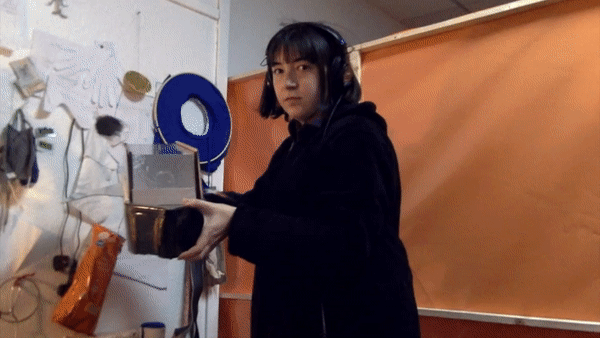


Sun Ra //Space is the place - 1974



‘The music of the earth the music of the stars by breathing, yes your music too were all instruments. Everyones supposed to be playing there part in this vast orchestra of the cosmos’
There is a sense here that the world is formulated to be a people in collaborative nature of the other ness that we cannot see.
Art as such as the poetic discussion that Sun Ra’s re thinking of the world causes is often mis judged within the Monterey value we place within art practice. Sun Ra’s ontology wants us to see our experience as holistic and vast in its ability to be expansive.
There is opposition seen In ‘Space is the place’ by the general public, as almost a test for to separate the un believers and the collaborators.
‘I’m not real I’m just like you, you don’t exist in this society if you did your people wouldn’t be seeking equal rights, your not real if your where you would have some stats amongst the hierarchy of the world. So we are both myths. I do not come to you as a reality, I come to you as the myth,’’ 24:53 / 1:21:17
The space age moved our perception of reality into a spin. Inescapable from those who contemplate in accordance with any other theory or narrative one may form. The fact that an otherness exists and is reachable within the shared consciousness of the world places what we are and could be and will be into a new heights.
How do we then not look objectively at the worlds vast history, mistakes, theory’s, beliefs and see it differently?




The Coltrane Changes
The making of the space ship Started in this endeavored to create a shape ship was in the listening of the giant steps by John Coltrane. The Coltrane Changes Between each note on the board there are 5 notes in between, so that the circle of notes joins back to the start of possible notes on a piano. The fifth note is so crucial here because, when we hear notes we do not here it in its exclusivity. When we play a C we not only hear C but hints of G, which happens to be the fifth note above C. This is seen as a subliminal note that hints resolution and tension within the notes and cords. 2 - 5 - 1 traditionally held within jazz music normal sits within 1 key. Within giant steps they sit within 3 keys. Not all keys fit together. But when changing keys happen harmoniously they can resolve the sense of tension that a key may provoke or vice versa. One could then jump from one key to the next to incorporate the whole scale of the circle of fifths. Within this interchanging a pattern form's, these patterns is was fascinated John Coltrane, and lead to his study of the circle of fifths (see figure) Within giant steps John Coltrane plays with this progression of fifths using major thirds, within the music its the 3 keys that are most distant from each other, forming a triangle. He uses the 5 -1 to make sense of this hop skip and jump into a new world of everlasting endless space like wonder. Musical harmony is all about finding the distant, to then reach home. Coltrane finds home within the distant and the far away possibilities of the musical harmony. There seems to be almost an alter motive here. Not to kind comfort in melody from its familiarity but to discover the new and utmost comfort of exploration. This is in a nut shell is space travel and discovery on another level of excitement and wonder. And hence what has propelled me to create a space ship.
One that I see becoming powered by the cord progression of giant steps and its genius! I first had the incline to create the circle of 5th’s into a spinning top Gifted to me was a skipped sheet of metal, bronze like, thin enough for ease of punish-ability and yet dense enough to hold form.



The Coltrane Changes

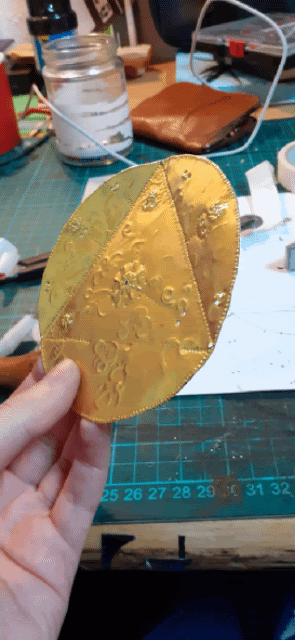




Inspiration taken from the punched brass of Polyphon disc's that play music similar to smaller music boxes, moving on the same premiss of records.










Playing with storyboarding and sound
Playing with storyboarding and sound
My little goldern UFO needs a voice! What better voice is there than that of the synth. Not being able to access any physical musical instruments to hand, I turned to a great free online software called 'Blockdust' that uses visual shapes to represent the different functions of each of the elements possible with the synth. Brilliant for people like me who don't have a clue about how synths work!
Thinking about the dynamic elements of the UFO I roughly sketched out possible scenes and broke up a mini score on the synth into 4 parts. The slight changes I made in the music represent the changes in the movement and introduction of a new prop. Press play on the video next door, make sure the sounds on in the bottom right-hand corner!







What else would make this alternative universe more believable? Perhaps an unnecessary GIF would survive. One of my favorite toys when I was little was a spinning device than would be twisted using 2 lines that sit parallel to each other, going through the middle of a wooden shape. When spun, potential would build in the middle of the toy until all you would need to do to make the shape spin would be to pull the twisted sting apart. It felt like a magic trick and the effect gave off something similar to that of a spinning vortex.
Despite my lack of money and resources I conjured up enough ink in my pens for a little cardboard experiment. For a good purpley haze I used a collection of colours that followed the beads of the UFO craft I had previously put together.
I took another approach after making this however, when trying to film the spinning motion, the effect got lost in the motion detection of the camera.
I changed tac and approached the imaging of the UFO line, what I did have at my disposal was a good scanner. To give the effect of the disotred moving of the ufo, I moved the shape whilst the scanner camera was moving. It gave off the effect that the image was moving. After doing this a few times it gave enough frames for a moving GIF.


Adding to the universe, aeroplane lines exist so do UFO lines



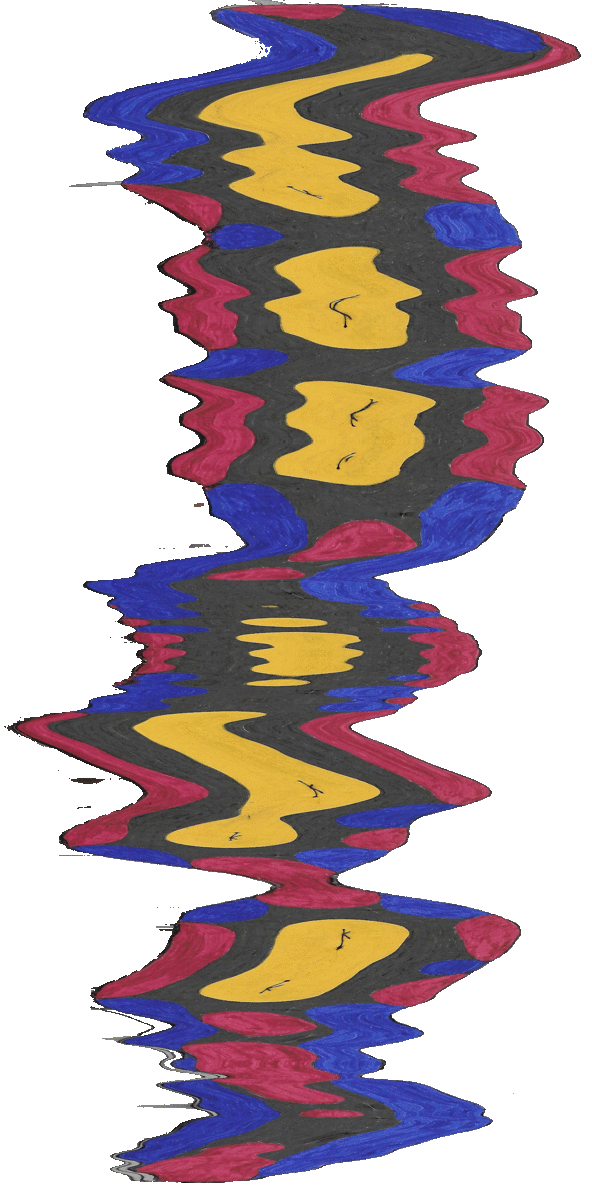



Deconstructionism of syntax within the structure of alternative society theory is often evident. The deconstruction of language within the futurist manifesto sat in harmonious gaze with the poetics of the structure of font. Devising its abstraction within the upper limits of the printing machine, to push the themes of the futurist revolution, playing on the leaps and bonds of the harmony of words in there melody. Ultimately this formed an expressive form of language that could be seen though the rethinking of the printed material that didn’t need to stay hidden on the page but though the rhythm of language. One could read an manifesto within the harmony of language that Marinetti devised, not confined to their own harmonies. No longer did politics rely on the spoken word to express its alternative response. What I take particular interest in here is the communication of the machine and the human in order to become the expressive form. One can imagine the collaging of the font press board with similar driven passion as the spoken word, in outdoor conferences of shaking fists.
A similar written parallel occurs though the deconstruction of the music theory of the Coltrane changes. It’s the parameters that accentuate the freedom. The psychical parameters of the Saxaphone. A metal vessel though which forces the condensed air of expression and pain staking hours of practice. All of which is heard though the utterance of a pure note of expression. In its self this perfection, considered into a pure note is a hall mark of the expression, despite it being replicable. Learning to play the trumpet has changed my perception of the machine. I am no longer purely one with my body in its singularity but co-human with the machine. My mouth structure strains to fit the mouth piece, my fingers mould them selves around the buttons. My spit value becomes the indicator of time and effort spent. I am both trumpet and human! I find grounding within this collaboration. Though shifting between discordant cords and within the liminal space of tension and home.
When the breath is utilised for expression something very unique occurs, guttural and grounding. It reminds me of a famous and controversial theory one Dr Pricilla Dustan found for communicating a child's needs with the form of there breath. She devised a universal language occurred in babies though the noises they make connected to the noises they make with there guts. For instance one noise becomes audible though a 'neh' sound, meaning hungry due to a build up for gas in the stomach that means the belly is empty. With the sound be the expulsion of excess air build up. It suggests that expression tones within our speech comes from our guttural responses to our needs. After all the complexities of language occur this foundation of noise is apparent. This foundation is perhaps an insight to why wind instruments are so expressive because it unites us with our immediate guttural responses to our bodies and the initial ground of communication. With this in mind, communication though music is the first indication of profound deconstruction of syntax. We rely on the machine in order for us to get to this point however to become once mechanised with our guttural response.
Mechanised structure of music within the post-human theory of language
Mechanised structure of music within the post-human theory of language




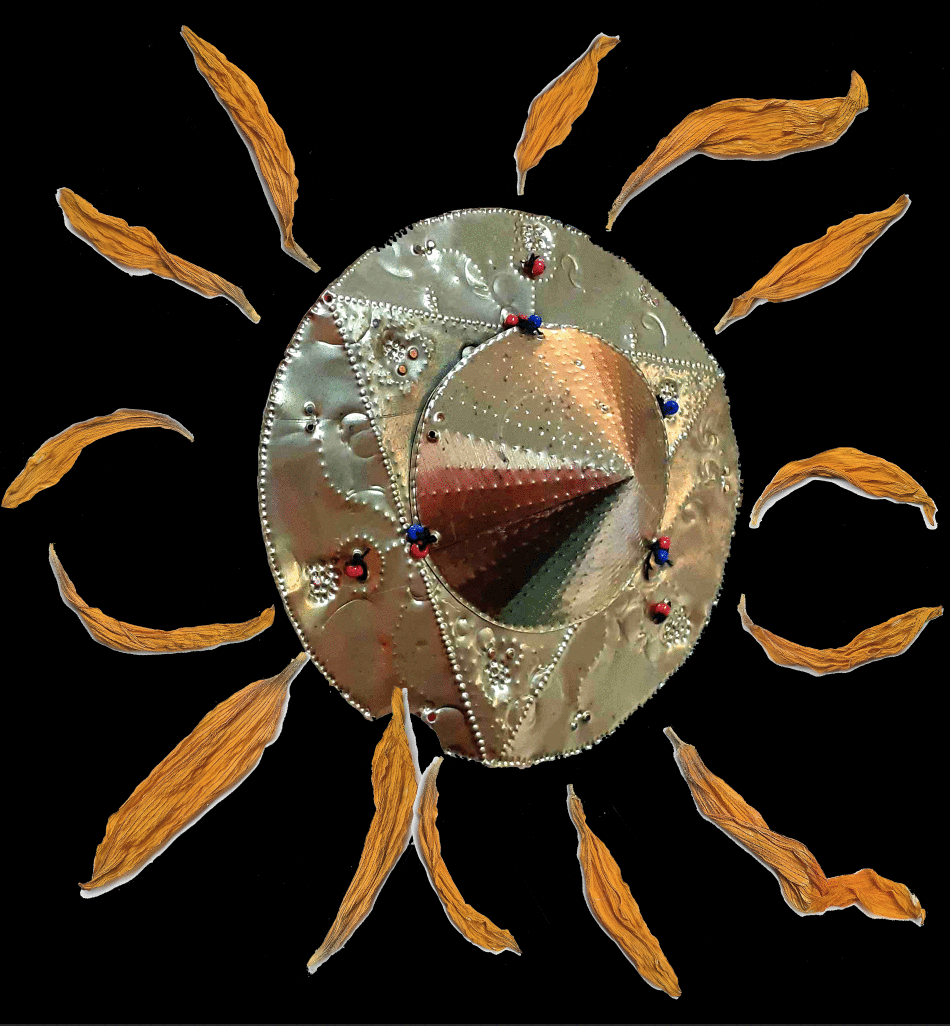







Narrative building with props
Narrative building with props







//The Blood of a poet, The lost artist
Delving into the delights of Sureelisim I take a look at an epic classic! I'm taken by the overwhelming encroachment of the self. The all-consuming moments of the creator and the work. Like most people, I have been alone whilst making this year. It's hard not to become lost in your own world.
As though the protagonist is looking through the liminality of space, on the verge of the unknown. Where reality and image meld into the surrealist conclusions. Mimesis: mockery and the truth of something and the image of that truth
The essence of the work seems to be a developed version of the human. Defying normal logic and limitations of psychical reality. The creator hints at this through the recreation of the face out of clay in the very beginning of the film.
Giving life or Pigmalión falls in love with the art that comes to life in his dream world
Hinting at the mythology of Catabasis – Going down into the underworld. This action resembling death is usually a storyline attributed to the hero. Within the film, the creator falls through the mirror, perhaps creative death from the overwhelmed artist? Is there an opposite to the catabasis?
Indeed – goes into the underworld and enters the world of the living and becomes a roman










Mika Rottenburg - Social surrealism // crafting a narrative though the process of the machine
Squeeze, Frying Pan
Within her work, she accentuates the means of production through the mechanical in occurrence with the grotesque nature of the organic. Within this, she plays on scale, not in literal terms, yet within the nature of the Marco and minutia of what could be seen as significant to the means of production its self. That
In an interview, she describes this though the object of the air conditioner’s shoved into windows on the towering New York landscape. Soon to be outlawed these become time-capsuled into the history books of function and the minute framed existence that we belong within. A stand-alone ecosystem, states of matter materialise within it this group converting system turns though the states of being. It both blocks the view of the world and gives reference to what might be the hidden reality we miss. Seductive nature of utilising the machine to create a narrative.


Preoccupied with the way things are made, how an object if formed. Understanding the process exposes the labour that is trapped inside the object. Every outcome of making has a life story, a narrative behind it from where it began to how it's utilised. To peel away at the story is the ‘spiritual kind of marxism’ that Rothenburg directs and deliberates.
The characters within the films are described as those who rent out there bodies or essence of their body, there tallness there facial structure their ability to perform. Taking it to the extreme of what is seen as labour, but being in command of it. The way in which they carry there appearance, is placed within the trust of both participants.
Her ontology continues with the perceived notion of the body as mechanism living in the organic realm of experience. The noise the texture the movement in collocation to the water content.
To access this in essence of what it is to be human accentuates is seen though body building, the movement and growth of the muscles living externally to the body.
Lemon rush
In the same way she accentuates the trapped nature of the object being essentially seen on the surface as only an object and not the object of labour, she sees the isolated nature of how it is to live exclusively within the body. On the extremities of largeness of the body, she discovers what it is to live within the body to learn to inhabit themselves within the restriction and resses into the new reality. To be the commander of ones own reality is to live in confidence that this is solely ones own limit of possibility, one cannot be join by another easily in relevance and so has to sit tall and in comfort of their proudness. To treat what one is though the ontology that lives in the process of production.
'Think of someone drawing a thread through the eye of a needle and how the tip of the tongue at the mouth’s corner helps the process. Look at Squeeze and the apertures Rottenberg opens in the wooden structures that make up the complex set. A heavy plank wall reveals a small opening into which a very pink tongue has been inserted. It flicks in a kind of desperation, calling without voice for moisture, and is rewarded with a spray of water. (You could also read it lewd and waving, like a hammy actor floundering on a vaudeville stage.) Rottenberg’s explanation was that she wanted the wall to be alive so it needed a mouth. The tongue, of course, needed to be kept moist. The other openings in the wall were, as she said, for the naked white butts arranged behind the Asian women massaging what appear to be the disembodied arms of the lettuce-picking women harvesting the greens from vast fields in Arizona. Practically, Rottenberg says, the explanation is a simple cooling system for the women who crush the produced materials in a vat that slides under their feet. It’s hot work. In the making, Rottenberg firmly adheres to a logic of her own. The perspectives presented in the videos aren’t rational constructions; nonetheless there is an entirely cohesive, enigmatic visual resolution in the work.' - Taken from https://bordercrossingsmag.com/article/fetishizing-the-visual-an-interview-with-mika-rottenberg


“Because the time-based medium, there spatial… so for me to move through space, to tie it together it has to be psychical. More and more I look at the globe as my set… this is like my play area. And I one to connect one point to another and I use movie magic to that. But that physicality is important. Moving away from dematerialisation, yet in the end, we are all made from materials, and there is a limit to how much you can dematerialise anything. Our resources are limited too. As much as we think we are broke beyond the material, I think its important to bring it back to the tactile very real aspects. And the connections that I make within my work is to give shape to this shapeless phenomena’s. How you press a button and something happens in another place in the world, these transactions that are so shapeless and hard to grasp by giving them shape is a way to look at it and reflect on it,’’ Interview with Mika Rottenburg, taken from - https://channel.louisiana.dk/video/mika-rottenberg-social-surrealism










On Location// Lochwinnoch
On Location// Lochwinnoch
Deciding that we needed to get out of the city, me and a friend could take a trip to Lochwinnoch. a spot not far out of Glasgow finds a massive Reservoir. the body of water leads you to a small nature reserve and a small town. above which you'll find the hidden away waterfall nestled against crumbling cottages and overgrown Hedges. We set out on the trip to find a safe haven and some work. with the capacity to carry things we brought a few props with us. I found this process taking items interesting in my practice. I've always been told that I carry a hell of a lot of things whenever I move. whether it's back home for a holiday. or to the studio for a day's work. my bag is overflowing. I like to be prepared. With this in mind I decided to prepare myself 4 what would be a very interesting weekend. I came armed with a camera and space outfits. also in my Arsenal of things was my trumpet. to be honest neglected my trumpet ever since moving to a new place. the idea of the great open outdoors as possibly I would have the opportunity to play my trumpet with no nosy neighbours insight. there was a strange freeing Sensation playing very loud instruments in the wild. I found it easy to come up with new wrists on my trumpet. there was freedom in my noise to the universe. I think this was the most comforting I had had in the past year. my trumpet had been with me throughout lockdown. We were old friends but we were still not very well acquainted. when I dedicated myself to taking my trumpet on this journey I felt as though I had cemented my love for this instrument. it seems strange that I could be so attached to a hunk of metal. but I couldn't. I have hoped for anything to be more inspiring and to take me more in the moment than instruments that are notoriously difficult to play. there is nothing more alien than trying to make a noise out of that thing. I feel like I've manipulated my face into something totally different.
I thought portraying this relationship on camera was a good starting understanding of how I could film a sci-fi movie. my relationship with this instrument would cement my relationship to the hunk of metal that is my camera. Just like how it is hard to make a note on my instrument the same feelings should transpire in my lense. it's that transition I wanted to feel comfortable with.
the shots from the trip easier on the second day at first I was tentative towards the camera. Felt as though I had something to prove. as though I had to really push the idea of a sci-fi movie sticking to its storyline. On the second day it felt as though I could shoot through the landscape of the forests that we found, as though they were framing my film. my movie became more about the forest fitted around me then me fitting within the forest. I realized perhaps I didn't need a sci-fi movie setting. Perhaps I could just make my environment the same out of this world. through framing it in a certain, off kilter way. my relationship with the camera became more fluid. I became more active in my choice of camera angles. enjoyed the manipulation of my body to shoot abstract scenes. the running back and forth between me and the camera to make sure that I was in Focus. The one-man band vibe doesn't get much better than this. when editing the footage I found myself still distanced from what it was that I was trying to convey. I was no longer looking at a sci-fi movie. but a story of something a little mysterious. I see the shots that I got from Lochwinnoch as a starting point. I wanted something finished, found that somewhere to leap off from would suffice.
Footage From Trip
Footage From Trip
